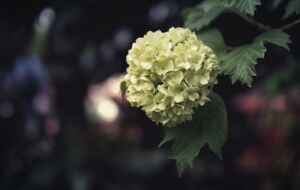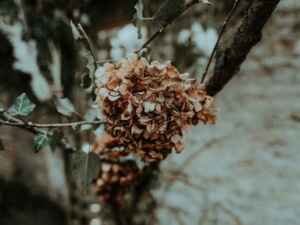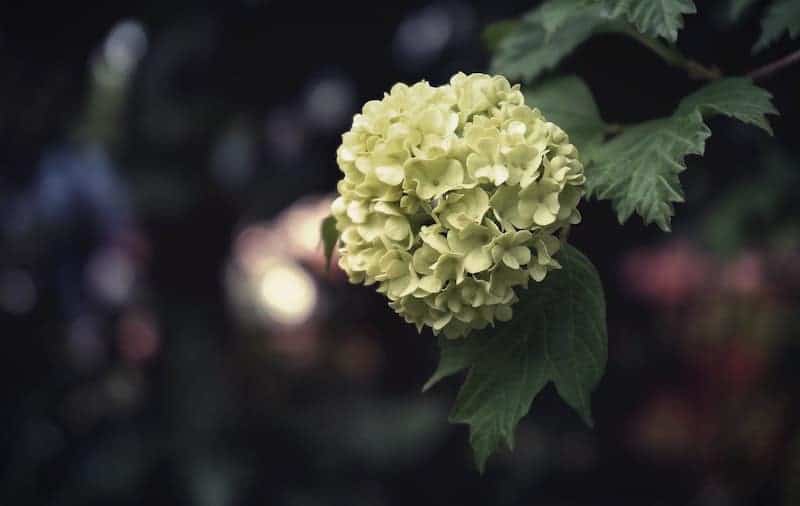Tips for Caring for Hydrangeas
Hydrangeas are beautiful shrubs that can add color and life to anyone’s garden. They come in many different colors and are loved by everyone. They come in pink, blue, white, cream, and multi-colored varieties. Hydrangeas are found growing wild throughout Southern Japan but they can be grown anywhere. This plant grows slowly, so allow them to become established before expecting too much growth. When Hydrangea flowers first open their color is not as vibrant as it will become with time. They require full sun or part shade for best blooms although the blooms will still develop even with less than ideal light conditions.
So, how do you care for Hydrangeas? It is important to know the different kinds and proper ways to take care of Hydrangeas so you can get the most out of what this beautiful flower has to offer! Hydrangeas require adequate watering during the spring and summer months. However, during the cooler months, Hydrangeas go dormant and do not require much care. It is also important to fertilize your Hydrangea as needed.
In this article, you will learn about how to properly care for Hydrangeas, and understand more about what conditions they prefer to grow.

The Different Types of Hydrangeas
Hydrangeas are beautiful plants that come in many colors and can be planted both outdoors and indoors. This plant can naturally grow to be big bushes, but they can also be trained to grow as smaller bushes or even as vines. The flowers are usually found blooming on the ends of stems or branches, not directly at their base or trunk.
They bloom during the summer months, especially around July. Hydrangeas have a wide range of soil needs, although they prefer acidic soil with a ph level of about 5.5-6.5 which is a slightly acid-neutral pH level.
There are many varieties of Hydrangea, and they all require different care, depending on the season. Hydrangeas are grouped into three main categories:
– Hydrangea Paniculata
– Hydrangea Macrophylla
– Hydrangea Serrata
Hydrangea Paniculata
Hydrangea Paniculata can be cared for by either planting in a shade or partial sun area or planting in a full sun area. These Hydrangeas prefer well-draining soil, and never need to be watered after the first year of growth. It can also withstand cold temperatures down to -20 degrees Fahrenheit and prefers acidic soil with a pH balance around 6.0.
The leaves on Hydrangea Paniculata turn red-pink in the fall, and bloom from July through August or September, depending on climate location. This type of Hydrangea is resistant to deer and rabbits and needs no pruning before wintertime.

Hydrangea Macrophylla
Hydrangea Macrophylla can also grow in a shade or partial sun area, or a full sun area, making it well-suited for many different gardens. This flower has big leaves on the outside of the plant, and small leaves in the center of the plant.
This type of Hydrangea does not need as much water as Hydrangea Paniculata and prefers more acidic soil.
This Hydrangea blooms from May until the first frost in the fall season and its flower lasts from July through September or October, depending on climate location. Hydrangeas thrive on being pruned every spring at the end of dormancy so they will grow larger and bushier each year.
Hydrangea Serrata
Hydrangea Serrata can also grow in either a shade or partial sun area, or a full sun area. This type of Hydrangea is best known for its pinkish-red flowers and big leaves that resemble maple leaves. This flower is also known to have dark green foliage and has an oblong-shaped flower.
Hydrangeas Serrata is happiest when planted in soils that are well-draining and only need to be watered one time during their growing season. This flower can also withstand the cold weather down to -20 degrees Fahrenheit. Hydrangea Serrata blooms from late May to early June and can be pruned in the fall before wintertime for healthy growth in the spring.
How to Properly Care for Your Hydrangea
During Hydrangea season, many plant owners are eager to take their flowers off their bush. Don’t be too hasty though! Hydrangeas are beautiful flowering plants that can stand for several months after they bloom. However, you do need to be mindful of how you treat them before and after their floral display.
Hydrangeas are hardy in U.S. Department of Agriculture zones 3 through 9, where spring is cool or mild with summer heat coming later in the season.
Caring for Hydrangeas During Fall & Winter
Fall and winter are times where Hydrangeas go dormant and prepare for their big show in the early summer. Hydrangeas feed off of carbohydrates from the sun during the spring and summer months, storing nutrients to use throughout fall and winter. Hydrangeas won’t need a lot of attention this time of year. Just be sure they have plenty of water since Hydrangea roots grow close to the soil surface where it’s easy for them to dry out quickly.
Hydrangeas also prefer moist soil, so place your Hydrangea pot on top of a tray filled with pebbles and water as an alternative way to maintain moisture in their soil or as a way to keep fresh flowers cut all season long.
Too much fertilizer can harm your Hydrangeas, leading them to burn or wilt. They are sensitive to salt buildup in the soil, so make sure you water thoroughly after you fertilize.
Hydrangeas prefer acidic soil. It’s wise to use an acidifying fertilizer or an aluminum sulfate fertilizer once per year at the beginning of spring to keep them healthy. Hydrangeas that receive too much nitrogen fertilizer may be prone to powdery mildew and frequent wilting.
Caring for Hydrangeas During Spring & Summer
While caring for Hydrangeas during spring and summer may seem like a difficult task, Hydrangeas thrive during this time! Hydrangeas need a lot of water and sun to grow, so ensure they have plenty of both moving forward. Hydrangeas also require acidic soil, which you can achieve by adding organic material such as peat moss to increase acidity.
It’s important not to over-fertilize a Hydrangea due to the salt buildup that will occur. They can also be sensitive to over-fertilization, which leads the plant to wilt. Hydrangeas do not like wet feet so be sure to keep them well drained and avoid overwatering.
Caring for Hydrangeas During Pregnancy
There are some plants that pregnant women should avoid because of toxins that may affect the fetus. Fortunately, Hydrangeas are not one of those plants. Hydrangeas are quite healthy during pregnancy and pose no risk to your baby, containing very low levels of cyanogenic glycosides.

Caring for Hydrangeas After Flowering
After your Hydrangea has finished flowering, it would be wise to cut the flower off at its base using sharp shears before removing them from their pot and washing away any dirt and debris.
Hydrangeas also benefit from heavy pruning after flowering. Remove dead wood and dead branches along with any damaged or diseased leaves at this time.
All-Purpose Hydrangea Fertilizer Recipe
Mix one tablespoon each of aluminum sulfate, hydrated lime, and blood meal into two gallons of water for a basic all-purpose fertilizer. Adjust ingredients according to package directions or as needed, since different plants have different needs regarding amounts of fertilizer.
Hydrangeas like a lot of water. Make sure the soil drains well and is loose enough to allow for easy root penetration. If Hydrangea leaves turn brown at their tips or edges, you may be putting too much salt in your Hydrangea pot. Remember that Hydrangeas don’t like salt buildup in the soil.
Benefits of Leaving Flowers on Hydrangeas
It’s common for Hydrangeas to be left with their flowers intact because they can stay beautiful for several weeks. You should also keep your Hydrangea looking fresh by cutting the old flower stem off right above the next growth point of your Hydrangea bush.
If you don’t want to cut the flowers off immediately, then wait until they brown and dry out before cutting them away. Hydrangeas will usually look best if you leave two or three blossoms per branch. However, we recommend leaving no more than six Hydrangea blooms per plant, so it will have more energy to focus on its foliage.
In conclusion, Hydrangeas are easy to care for if you know what you’re doing. They can survive through droughts without your constant watering. It is best to water them every other day if it’s hot outside. Hydrangeas love to get direct sunlight. Be sure to place them in front of an open window or south-facing door. They also do well indoors! This is because they can thrive in artificial light and live longer than plants that aren’t houseplants.
Hydrangeas are great for making flower arrangements. If your flowers begin to wilt or brown up, you can cut off the dead flowers and make new ones grow. They also help reduce air pollution inside your home (it absorbs carbon dioxide) and act as natural humidifiers too!
The benefits of Hydrangea flowers are endless, and I’ve personally had much success in my garden with planting them. I have found that Hydrangeas are easier to maintain than almost all of the other plants in my garden. They are a show-stopping flower that adds lots of vibrant colors to any garden. You’ll be blessed with gorgeous flowers blooming every time!

